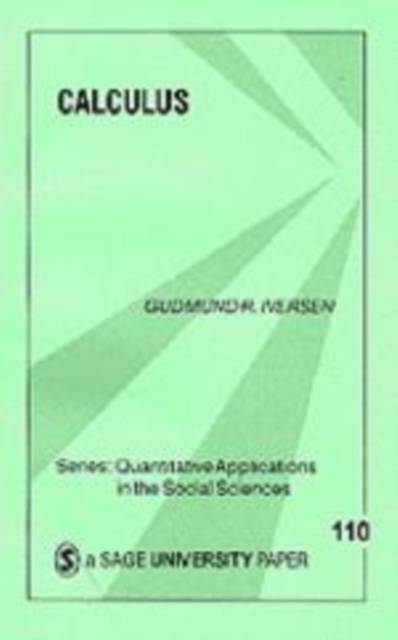
- Afhalen na 1 uur in een winkel met voorraad
- Gratis thuislevering in België vanaf € 30
- Ruim aanbod met 7 miljoen producten
- Afhalen na 1 uur in een winkel met voorraad
- Gratis thuislevering in België vanaf € 30
- Ruim aanbod met 7 miljoen producten
Zoeken
Omschrijving
Aimed at readers who may be more familiar with statistics than calculus and mathematics, this carefully written volume gives an overview of the central ideas in calculus. Author Gudmund R. Iversen shows examples of how calculus is used to translate many real-world phenomena into mathematical functions. Beginning with an explanation of the two major parts of calculus, differentiation and integration, Iversen illustrates how calculus is used in statistics to distinguish between the mean and the median, to derive the least squares formulas for regression coefficients, to find values of parameters from theoretical distributions, and to find a statistical p value when we using one of the continuous test variables like the t variable. Social scientists who either never took a calculus course or who want to "brush up" on their understanding of calculus will find this book a necessity.
Specificaties
Betrokkenen
- Auteur(s):
- Uitgeverij:
Inhoud
- Aantal bladzijden:
- 88
- Taal:
- Engels
- Reeks:
- Reeksnummer:
- nr. 110
Eigenschappen
- Productcode (EAN):
- 9780803971103
- Verschijningsdatum:
- 1/01/1996
- Uitvoering:
- Paperback
- Formaat:
- Trade paperback (VS)
- Afmetingen:
- 138 mm x 213 mm
- Gewicht:
- 108 g

Alleen bij Standaard Boekhandel
+ 140 punten op je klantenkaart van Standaard Boekhandel
Beoordelingen
We publiceren alleen reviews die voldoen aan de voorwaarden voor reviews. Bekijk onze voorwaarden voor reviews.











